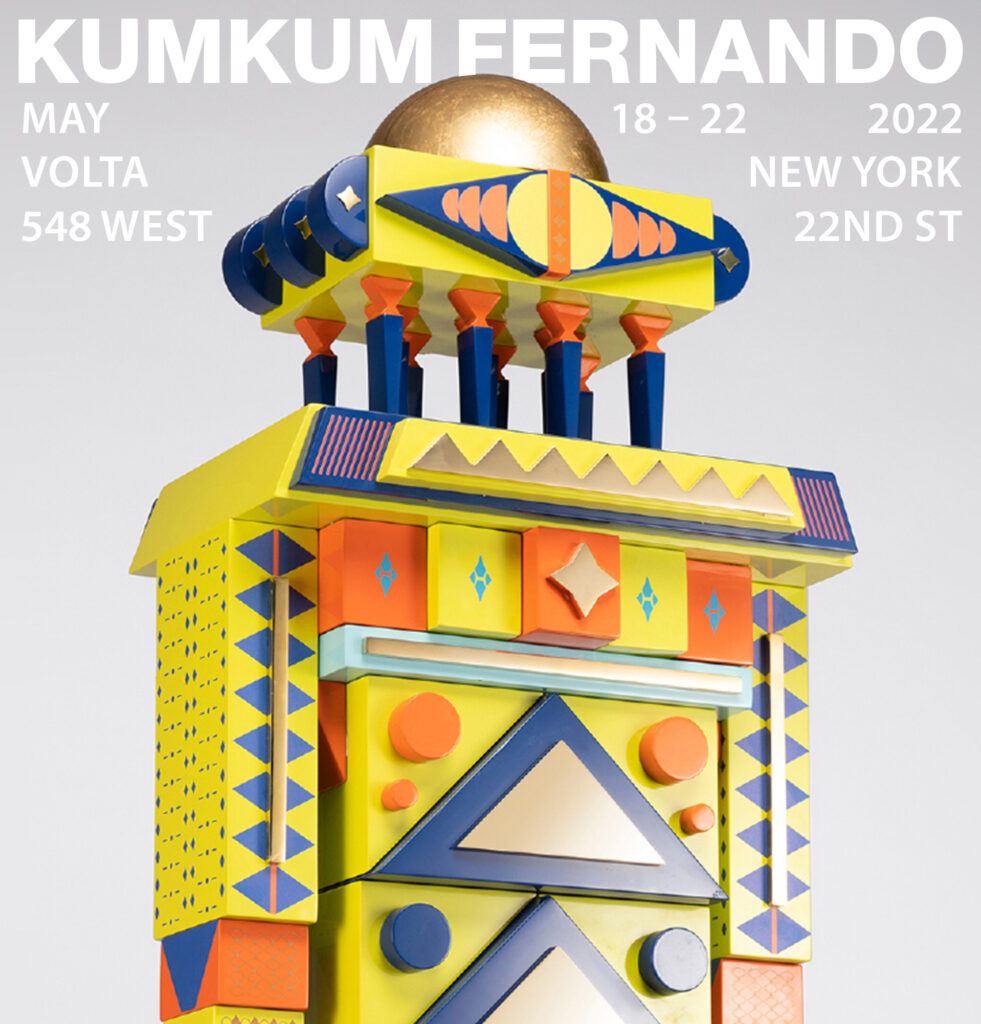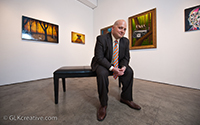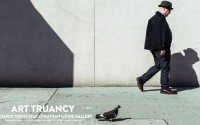The monolithic sculptures of Kumkum Fernando look to the future in their design language but pay homage to the past in their handmade construction and collaboration with Southeast Asian artisans. The forms revel in their celebration of ritual as they are born from a labor intensive and secretive process that transforms robots into idols.
Kumkum’s sculptures are mixed media, however, the main material is wood. The blueprint for each piece is rendered into individual building blocks, which are subsequently hand-sanded and constructed. Color and silk screen designs are added to bring vibrancy and depth to the blocks. The pieces are then finished with a high-gloss lacquer by southeast Asian artisans. The lacquering process is quite secretive; Kumkum has been working with the artisans for years, but they have never completely revealed their techniques.
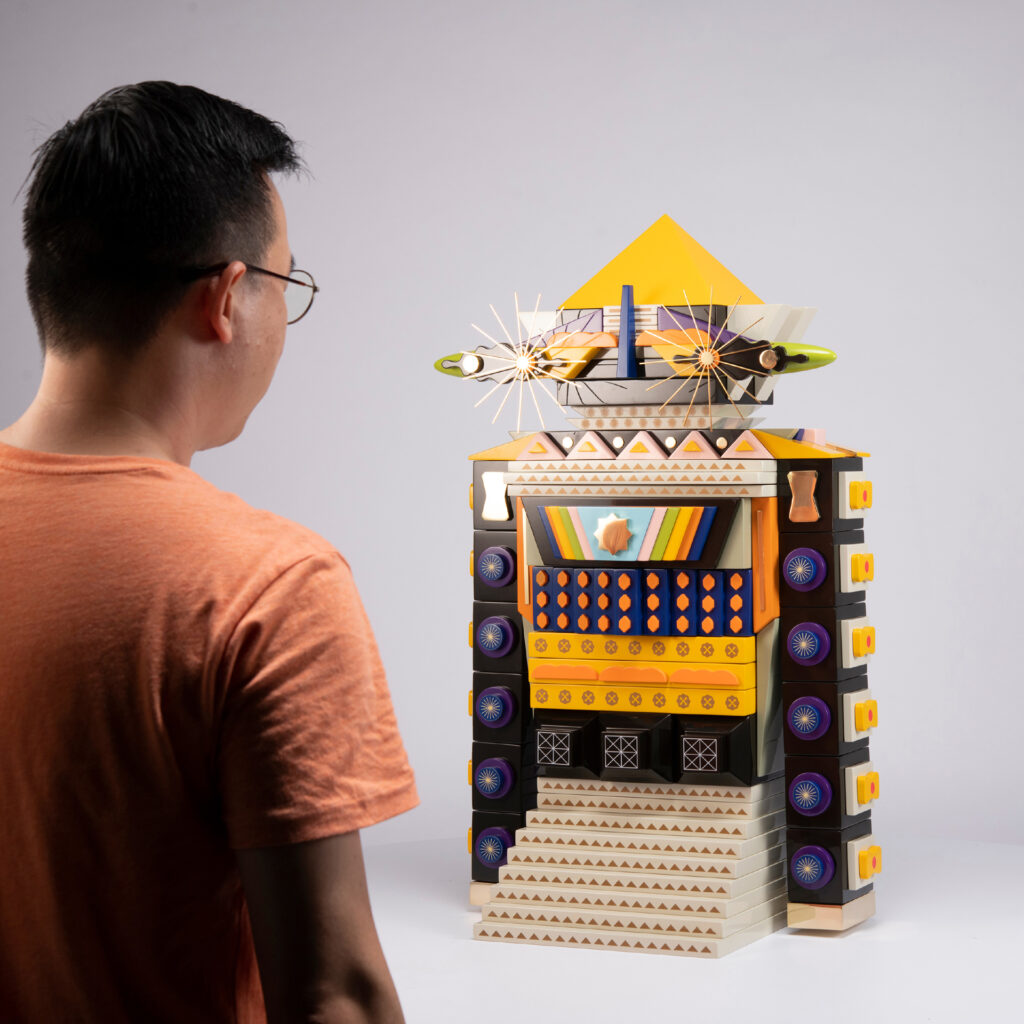
How does the philosophy of your gallery align with the vision of VOLTA?
Jonathan Levine Projects is committed to cutting edge art, which is something I’ve always found VOLTA to celebrate. I also appreciate how VOLTA, similar to my gallery, provides exhibition opportunities for emerging artists.
Is this your first year exhibiting with VOLTA?
This is the third time Jonathan LeVine Projects is exhibiting at VOLTA NY. Our first time was in 2011 with an exhibition of work by Jim Houser. We returned in 2014 with work by Pose. This is not our first time exhibiting at VOLTA NY, however, it’s exciting to return after eight years. I look forward to being back in New York and seeing many familiar faces.
In what ways are your exhibiting artists engaging with VOLTA’s messaging of “Connect,” “Collect,” and “Discover?”
Our booth is a solo presentation of work by Kumkum Fernando and his process is the epitome of VOLTA’s messaging – “Connect. Collect. Discover.” He was born in Sri Lanka and is the son of an antiques and curiosities collector. As far back as he can remember, Kumkum has been a collector as well: of stones, spoons, statues, masks, and other ancient marvels and treasures. From his home base in Vietnam, he scours the streets for found materials and uses them as a source of inspiration. By repurposing their aesthetic, he creates monolith sculptures that connect to the past, yet present fantastical visions of the future: mighty robots, flying contraptions and mystical beings. In addition, Kumkum is always discovering and playing with new techniques. For example, all of his paint colors are custom made, sometimes discovering over 70 unique colors before selecting the perfect hue.
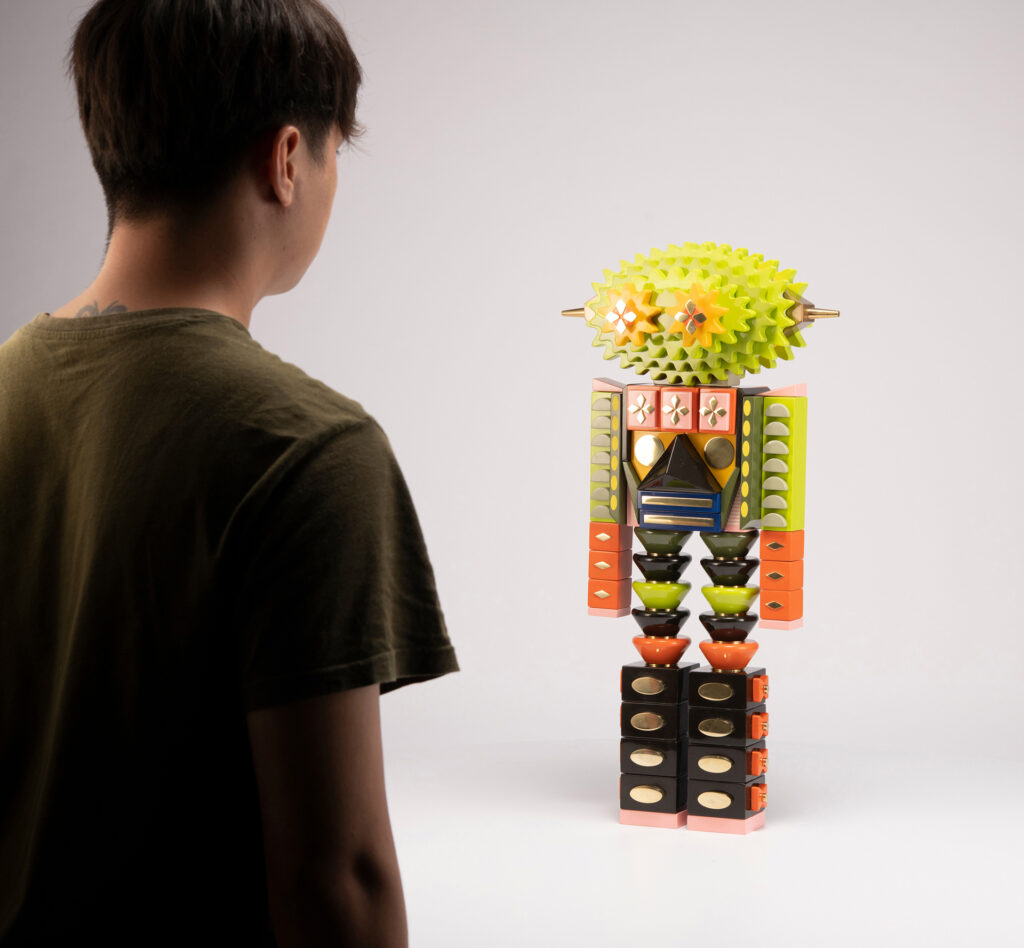
The 2022 edition of VOLTA New York is particularly special because it celebrates the fair’s return to the city after an unprecedented season of change. The international restrictions of the pandemic were deeply felt and presented opportunities to develop new programming and methods of engagement that may never have been considered otherwise. In what ways has the programming of your gallery evolved? How did you maintain a connection with your collectors and artists? Will these changes remain a part of your gallery moving forward?
In 2019, Jonathan LeVine Projects transitioned from a brick-and-mortar gallery to a virtual exhibition platform. When the pandemic hit we were luckily already established as a digital space for exhibiting and selling fine art. Over the last two years we’ve refined our ability to recreate a gallery experience solely through virtual interactions. For example, we developed a website dedicated to Kumkum Fernando that includes images, videos and descriptions not only of his work, but of his entire artistic process from inspiration to final creation. The goal is for visitors of the site to develop a connection to the work by getting a first-hand look inside his practice, pulling back the curtain so to speak. This is something that will continue to be part of our programming moving forward. It will make our in-person exhibitions, like VOLTA NY, a sought after opportunity.
How did you determine which artists to exhibit at VOLTA?
I began working with Kumkum Fernando in early 2021 when we started planning his first solo exhibition at the gallery. Then the pandemic happened and everything went on pause. Choosing to exhibit his work at VOLTA NY was a no brainer because he had these amazing pieces that had waited years to be shown, in addition to new works.Also, following the success of his March 2022 online exhibition Temples, Gods and Robots, I had to take this opportunity for his work to be seen in-person by art enthusiasts and collectors from around the world.
What dialogue does the work of Kumkum Fernando engage in? How does it fit within the greater narrative of the other artists in your roster?
Kumkum’s sculptures are vibrant deities that evoke a unique spiritualism. They appear as toys from a distance, however, upon closer examination, they transform into idols. I find the narrative of transformation within sculpture to be something I’m drawn to. For example, I gave Haroshi his first solo show in New York City back in 2011 and exhibited his work many times after that. At first glance, his sculptures appear like everyday objects. Upon closer inspection it’s revealed that each piece is composed of layered skateboard decks. More recently, I’ve exhibited work by the New York based artist Ronald Gonzalez. His sculptures transform found objects into human busts in an attempt to capture the darker workings of the human soul. Both Haroshi and Gonzalez literally transform their materials to create something new. Kumkum transforms the aesthetics of his source of inspiration. The traditional objects that inspire him, such as window patterns from ancient temples, are given new life within his cosmic monoliths.
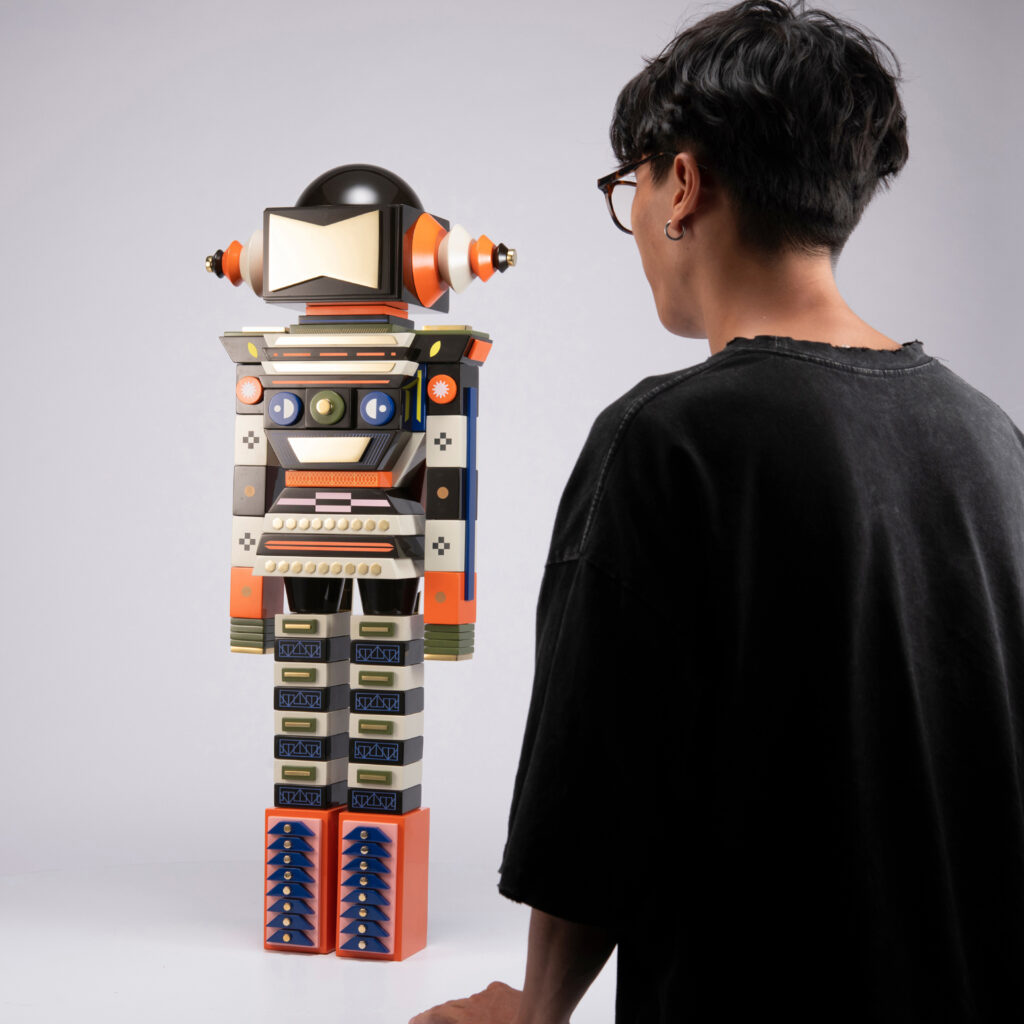
How do their choices of material reflect those themes?
Kumkum’s sculptures are mixed media, however, the main material is wood. The blueprint for each piece is rendered into individual building blocks, which are subsequently hand-sanded and constructed. Color and silk screen designs are added to bring vibrancy and depth to the blocks. The pieces are then finished with a high-gloss lacquer by southeast Asian artisans. The lacquering process is quite secretive; Kumkum has been working with the artisans for years, but they have never completely revealed their techniques. The creation of one piece is a very labor intensive process and each phase is like its own ritual. I think this ties back to the feeling of spiritualism his work evokes. It’s also a nod to the indigenous peoples who created his sources of inspiration – jewelry, rugs, ornate doors, etc. – all of which were made in a ceremonial manner.
What curatorial considerations were made in preparation for VOLTA?
Kumkum played a vital role in curating this booth. Everything from the size of the sculptures, the pedestal placement, down to the lighting is very intentional. We’re exhibiting ten sculptures, all of which are two to three feet tall, in a 200 square foot booth. At first I thought it was too much work for that small of a space. But then Kumkum showed me digital renderings of his intended design and they were impactful. The works unapologetically consume the booth, like a mini robot army preparing for battle.
What message do you hope to leave visitors with (both those who are experiencing the fair in person and our readers who are exploring the work remotely?)
I hope visitors are left knowing more about Kumkum Fernando and eager to see more from him. Aesthetically, his work is amazing and can stand on its own. But a deeper appreciation is revealed when you learn about his background and process as a true artisan.
Source: Installation Magazine
